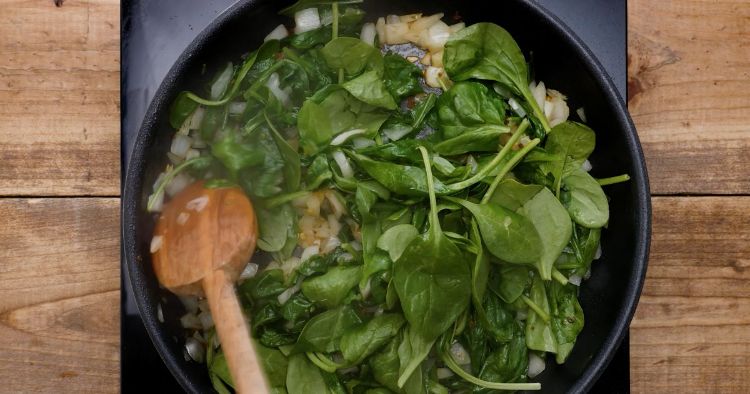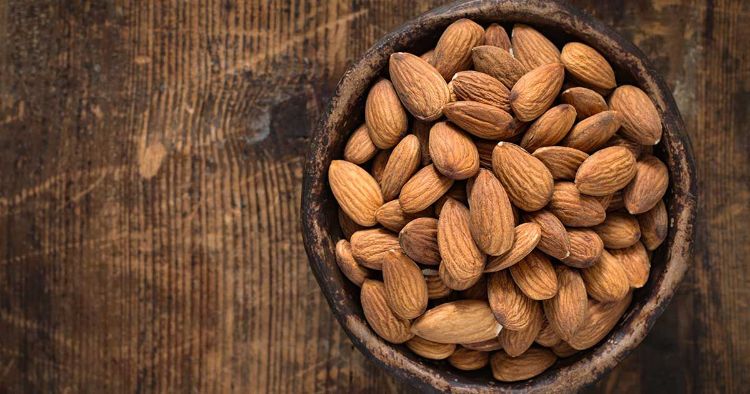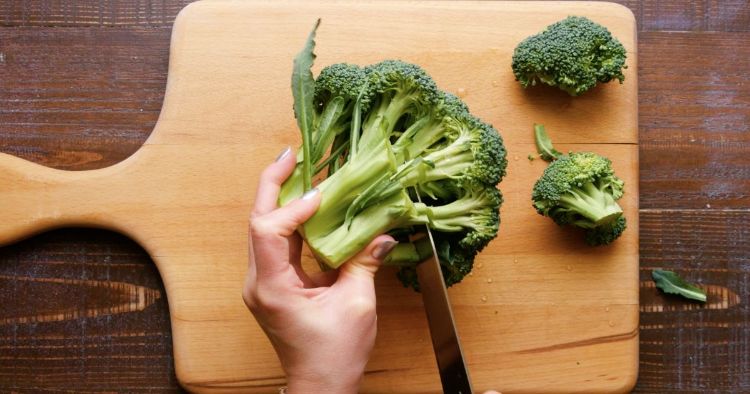When your doctor tells you to increase your iron levels, it doesn’t mean you should run to the nearest construction site and lick an iron rod. Unless you need a serious instant increase, it also doesn’t mean you need to swallow a tasteless supplement from the pharmacy or big-box store.
Iron is a necessary mineral in the human body required to create hemoglobin, and it is called “iron deficiency” when you lack the proper amount. Iron deficiency can be a result of several issues, including a low-iron diet or blood loss, and can develop into anemia.
Advertisement

Remedy Daily
Although you could take supplements under the guidance of a physician (too much iron can lead to iron poisoning), there are more natural alternatives. Check out the following list of iron-rich foods you can easily incorporate into your diet:
1. Beans

Cooktop Cove
Next time someone asks you if you are full of beans, say yes. Beans contain significant amounts of iron as well as potassium, and they are very affordable and filling. There are so many varieties of beans that you easily can avoid the dreaded lima beans. Beans are versatile edibles and work well in soups and as burrito, enchilada and taco fillings.
2. Oysters
Oysters have significant amounts of iron, but make sure you know from where they come. Some wild oysters contain contaminants taken in from the waters around them. Three ounces of oysters should provide 3.5 milligrams of iron. You don’t have to eat them straight; try a chowder.
3. Red meat

Cooktop Cove
Red meat such as beef and venison have high iron content but should be eaten regularly to be effective in adding iron to your diet. Three ounces per serving is sufficient. Goose, duck and pork liver also rate high in iron. Before you chow down on the nearest hamburger, be mindful of fat content and use leaner meats.
4. Spinach

Cooktop Cove
For vegetables containing iron, spinach is right up there. Drizzle some low-fat dressing on a giant bowl of spinach leaves or encase each bite of meat with a leaf or two. When cooking spinach, only cook it until it just begins to wilt. Oddly enough, spinach also contains substances that can inhibit iron absorption, so for maximum effectiveness, cook it slightly.
5. Prunes and raisins
Prunes may help with a certain bodily function, but they also contain a good amount of iron. If noshing on a box of dried prunes is not your cup of tea, try 1/2 cup of raisins. Add raisins to cold cereal, oatmeal or hot wheat cereal for your breakfast dose.
6. Nuts

Shutterstock
If you aren’t allergic to nuts, snack on an ounce or two of peanuts, walnuts or roasted cashews. To incorporate nuts into a meal, add roasted almonds to cold cereal, sprinkle some on top of a salad or load chopped peanuts on pad Thai. Roasted cashews add a tasty crunch to vegetarian chili.
7. Eggs

Shutterstock
Eggs are among the top sources of heme iron. Two large eggs contain 1.68 mg of iron.
8. Brown rice
Brown rice has a firmer, chewier texture than long-grain white rice, but 1 cup of it cooked provides a decent serving of iron. Although tasty on its own, rice often is eaten in conjunction with other food. Use brown rice in soups, fried rice, rice porridge or as the base on which stir-fried vegetables rest.
9. Broccoli

Cooktop Cove
Beyond pulling off the florets and dunking them in ranch dressing, you can prepare a medium stalk of broccoli in other ways. As with any veggies, getting enough iron requires you eat a decent amount; in this case, the entire medium stalk. Lightly steamed broccoli is a must in stir-fries and can be a side for any meat or pasta dish.
10. Split peas
Split peas may conjure childhood flashbacks of wrinkled noses and wondering what this “pea soup thing” is, but split peas are high in iron. Cooked, 1/2 cup provides 0.7 milligrams of iron. Split peas fall apart very easily when cooked, so a pea-soup variation or a South Indian vegetable kootu are your best bets.
11. Fish

Cooktop Cove
If something smells fishy, make sure it’s salmon, haddock, halibut or perch. Three ounces of these fish provide 0.3 milligrams or more of iron. Fish can be prepared in a multitude of ways, including baked, grilled, steamed, broiled and fried. For a simple preparation of a white fish, sprinkle it with black pepper and a little salt, squeeze some lemon juice on the filet, toss in some butter and cook according to your preferred method.
12. Whole grains
Unprocessed whole grains that still contain bran are high in iron. One-hundred grams of cooked amaranth, oats or whole wheat provide 10 to 12 percent of the daily recommended iron intake for women ages 20 to 50. Soak these grains prior to cooking them as they contain phytic acid, which can inhibit iron absorption. Soaking breaks down the acid.
13. Tofu

Cooktop Cove
Tofu is more readily available in grocery stores than it used to be, especially if you are lucky enough to live near an Asian market. One-half cup of tofu provides 3.6 milligrams of iron. Tofu tastes vary between manufacturers, so it’s likely you can find a brand you’ll enjoy uncooked. If you want to heat tofu, dry and gently press it with paper towels to reduce the moisture before cooking it. Add cubes to chicken soup, or lightly bread and bake larger chunks or slices. Tofu tossed and sautéed in sweet-and-sour sauce with a side of brown rice is a tasty vegetarian option.
14. Dark chocolate
Add some sweet iron to your diet with the occasional indulgence in dark chocolate. One ounce of this treat provides slightly more than 3 milligrams of iron. True dark chocolate also contains magnesium, fiber, copper and manganese. Beneficial dark chocolate contains at least 70 percent cocoa.
15. Seeds
Sesame and pumpkin seeds both contain high amounts of iron, with 1/4 cup sesame seeds harboring 5 milligrams of iron. This will put a serious dent in your recommended daily intake. If you prefer something other than a handful of seeds straight, try making sesame cookies or add roasted seeds to slightly sweetened cooked spinach. Pumpkin seeds contain approximately 4 milligrams of iron per ounce.
16. Swiss chard
Ironically, Swiss chard has nothing to do with Switzerland, but it does have something to do with iron. One cup of the red-and-green leafy veggie gives you approximately 4 milligrams of the mineral. In general, Swiss chard is a well-rounded health food, also containing vitamins K, C and A, among other nutrients. Sauté or steam chard as you would spinach. It may be eaten plain, seasoned or added to pasta.
17. Olives
One cup of canned, ripe olives provides almost 4.5 milligrams of iron. If you don’t want to enjoy them straight out of the jar, add some to diced avocado and low-fat Italian dressing. Enhance any antipasto with marinated olives.
Advertisement
18. Spices
Iron doesn’t have to come from something you actively have to chew. Some herbs and spices contain decent amounts of iron. Two teaspoons of cumin contain 2.8 milligrams of the minerals – so go ahead and add some to rice, chili or cooked lentils. One hundred grams of fresh thyme provides more than 17 milligrams of iron, which is far more than you need daily. Use a bit less to season roasted sweet potatoes or cooked chicken. Spearmint and marjoram also are higher in iron content.

